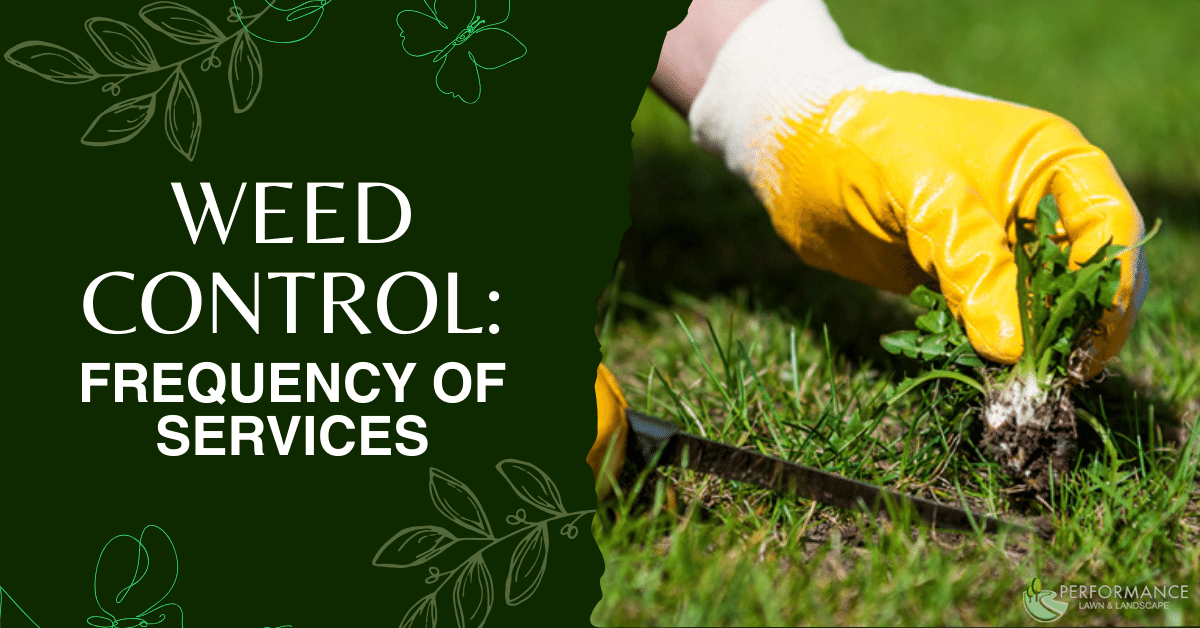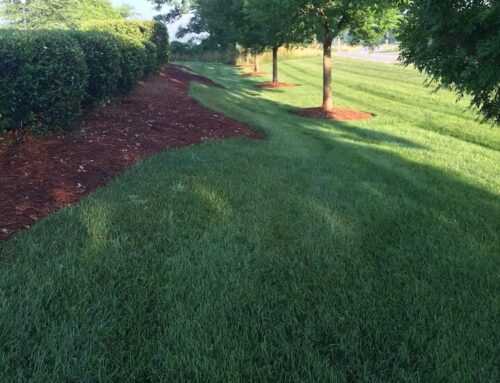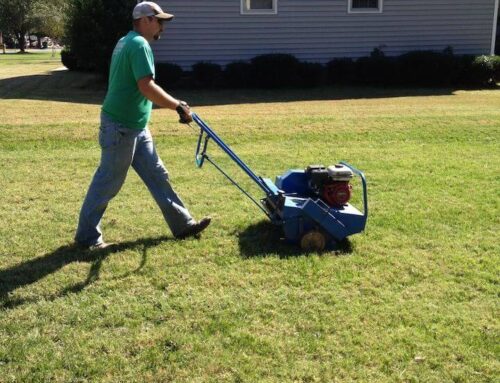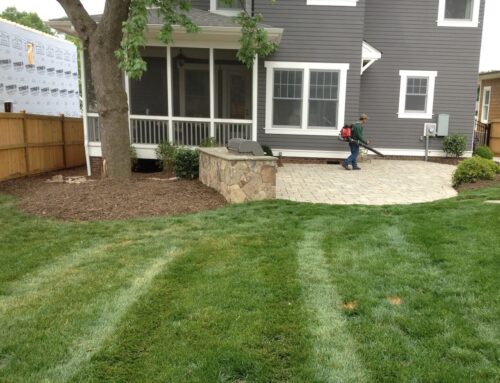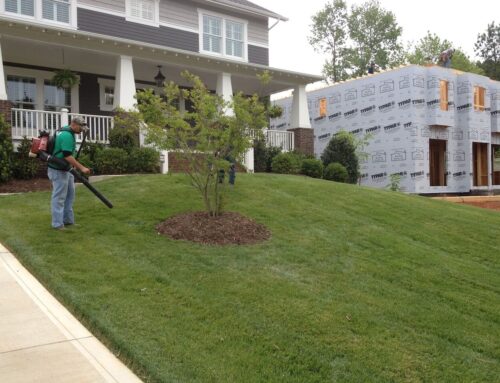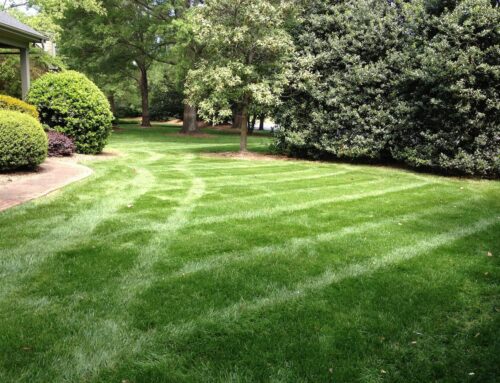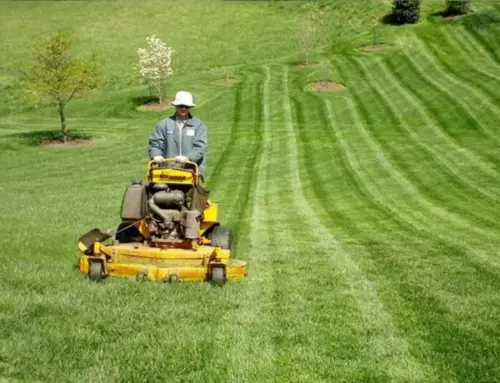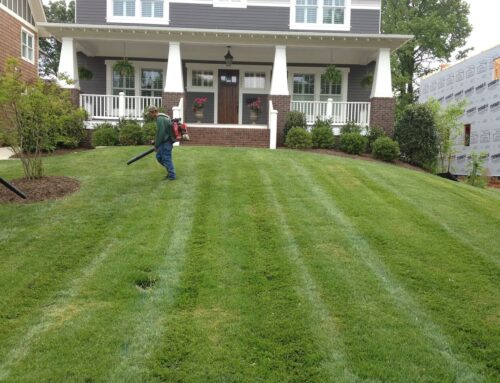A beautiful, lush, and green lawn is every homeowner’s dream, but maintaining such a landscape can be challenging, especially when dealing with pesky weeds that tend to grow and multiply relentlessly.
Managing weeds is an ongoing challenge for any landscaping company and property owners alike. Whether it’s unsightly dandelions popping up in your lawn or invasive vines strangling your trees, weeds have a knack for popping up when you least expect or want them.
Determining the proper frequency for weed control services is an important consideration to keep unwanted plants at bay while also balancing your maintenance budget and priorities.
service from consultation to finish. We believe in transparent communication and will keep you updated every step of the way, resolving your concerns quickly and effectively.
So, don’t let weeds rob you of the joy of having a beautiful lawn. Reach out to Performance Lawn and Landscapes, your trusted partner in maintaining a vibrant, healthy, and weed-free lawn.
How often should weed control services be employed for effective weed management?
- Early Spring: Starting your weed control program in early spring is essential. This is the time when weeds begin to emerge from their winter dormancy. Applying weed control treatments at this stage helps stop the spread of weeds before they cause any trouble.
- Late Spring: As temperatures rise and your grass enters its active growth phase, weeds become more aggressive. A late spring treatment is crucial to address any established weeds.
- Summer: Summer can be challenging for weed management, as warm temperatures and ample sunlight create ideal conditions for weed growth. Regular treatments during the summer months are necessary to maintain a weed-free lawn and ensure your grass can thrive.
- Early Fall: As the summer season ends, early fall is the time to apply another round of weed control. This treatment helps control any remaining weeds and preparing your grass for winter.
- Late Fall: The final treatment of the year is in late fall. This ensures your yard is protected against late-season weeds and sets the stage for a healthy spring lawn.
What is the significance of the critical period in weed control, and how does it impact the frequency of services?
The critical period in weed control refers to the window when weeds are most vulnerable and susceptible to treatment. Understanding this period is essential because it directly impacts the frequency of weed control services:
- Early Intervention: By starting weed control services in early spring, you target weeds during their critical period when they are just emerging. This early intervention prevents them from establishing a foothold in your lawn.
- Reduced Frequency: The need for frequent applications decreases when you apply weed control treatments during the critical period. Addressing weeds at the right time reduces their overall presence, allowing for a more manageable weed control schedule.
- Long-Term Effectiveness: Effectively managing weeds during their critical period sets the stage for long-term success. It reduces the weed seed bank in your soil, meaning fewer weed seeds are present to germinate in subsequent seasons.
- Healthier Lawn: Controlling weeds during their critical period not only minimizes weed competition but also promotes the health of your grass. A weed-free lawn can utilize nutrients, water, and sunlight more efficiently, leading to a thicker, lusher lawn.
Weed control frequency depends on the crucial period of treatment time. A well-planned strategy that targets weeds in their susceptible stages will keep your lawn beautiful and weed-free with fewer sprays.
Performance Lawn and Landscapes knows the value of timing and tailors our services to provide your lawn with the correct treatments at the right time, creating a healthier and more resilient outdoor space for you to enjoy.
What preventive methods are commonly employed in weed control to reduce the need for frequent treatments?
Preventive methods are crucial in weed control to minimize the necessity for frequent treatments. One of the most commonly used methods is the use of pre-emergent herbicides. These are applied to the soil before the weed seeds germinate, preventing them from sprouting.
Another preventive method involves the correct and regular maintenance of lawns and gardens. This includes proper lawn watering, mowing, and fertilizing to strengthen the plants, making them less susceptible to weed infestation.
Finally, mulching is another effective preventive method. By coating soil with organic material or inorganic material, we can suppress weed growth by blocking sunlight, which prevents weed germination and growth.
Manual removal of weeds before they set seed is also a simple but effective method to control weed spread.
How is weed control efficiency calculated to assess the effectiveness of weed management strategies?
Weed control efficiency is determined by thoroughly evaluating various weed management strategies. This involves measuring the prevalence and distribution of weeds before and after applying specific techniques, which are then used to calculate the weed population percentage change.
Regularly monitoring the treated area is crucial for detecting new weed growth, existing weed survival rates, and the overall efficacy of the strategies. Successful weed control is defined by reduced weed density and improved plant health and growth.
Inefficient strategies fail to control weed growth or adversely affect selected plants. To assess the efficacy of weed control, it is essential to examine the weed population, target plant state, and the results of the weed management techniques.
What factors influence the recommended frequency of weed control services in different environments and landscapes?
Factors Influencing the Recommended Frequency of Weed Control Services:
- Climate: Different climates affect weed growth rates. Warmer and wetter climates may require more frequent weed control due to increased weed activity.
- Weed Types: The types of weeds in your area determine the necessary treatment frequency. More aggressive or resilient weed species may need more attention.
- Lawn Health: A healthy lawn resists weed infestations. Regular lawn care and maintenance can reduce the need for frequent weed control.
- Landscaping Elements: Garden beds, trees, and shrubs can create weed-prone areas requiring more frequent treatments.
- Soil Conditions: Soil quality, compaction, and nutrient levels influence weed growth. Poor soil conditions may necessitate more frequent weed control efforts.
- Local Regulations: Some areas have specific regulations regarding weed control. Compliance with these regulations can affect service frequency.
At Performance Lawn and Landscapes, we consider all these factors to provide tailored weed control services that suit your unique environment and landscape, ensuring a weed-free and vibrant outdoor space.
Regular weed control services are essential for maintaining the beauty and health of your lawn. By partnering with Performance Lawn and Landscapes, you can ensure your lawn remains weed-free throughout the year.
Our customized programs and expert technicians will work tirelessly to keep your lawn looking its best, letting you enjoy a green backyard paradise. Contact us today to schedule your personalized weed control program and take the first step toward a more beautiful and vibrant lawn.

